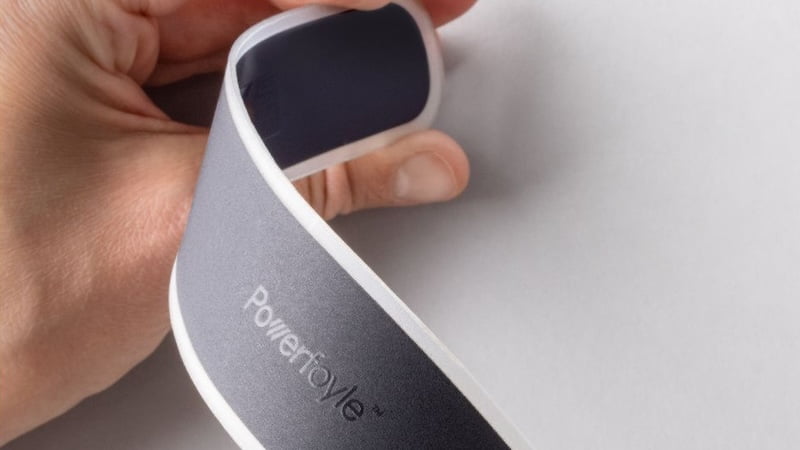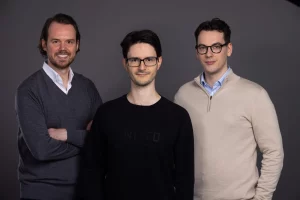
Charging electrical devices without cables: This is what a Swedish company promises with the help of an indoor solar cell that does not even need the sun. This should make charging cables superfluous.
Energy from any light source: that's what a Swedish company's invention is supposed to be able to do. Exeger's so-called Powerfoyle doesn't even necessarily need the sun to do this. The indoor solar cell is flexible and can charge electronic devices such as headphones, keyboards and smart home gadgets – without cables.
Charging without cables: How the Powerfoyle works
The technology is based on artificial photosynthesis processes to convert light energy into electricity. According to the manufacturer, the solar cell is therefore not necessarily dependent on direct sunlight. Diffuse light, such as that from a candle or from indoor lighting, is also suitable.
It is precisely because there is a lack of light in Sweden during the winter months that founder Giovanni Fili came up with the idea of further developing solar technology. “Like the algae on the bottom of the ocean, where it is almost pitch black, we can use very few photons efficiently,” he explains to The IndependentIts mission is to address global energy needs and some of the planet's greatest environmental challenges.
“Powerfoyle is a solar cell that can be integrated into consumer electronics to supply them with endless clean energy,” the company writes on the product page for the solar film. It differs from conventional glass-covered panels because it does not require conductor tracks. It is also insensitive to partial shading, which normally drastically reduces the efficiency of photovoltaic modules.
Swedish start-up further develops indoor solar cell
Indoor solar cells have actually been around for decades. For example, solar-powered calculators were introduced in the 1970s. In 1988, researchers at UC Berkeley in California developed a low-cost, highly efficient dye-sensitized solar cell that was both semi-flexible and semi-transparent.
More than 20 years later, Fili and Exeger co-founder Henrik Lindström developed a new electrode material from this technology that promises 1,000 times better conductivity. It is the basis for the Powerfoyle cell, which is now produced on a commercial scale.
Charging without cables: The solar cell is already installed in these devices
Exeger received a loan of 35 million euros from the European Investment Bank (EIB) in December 2023. The money will be used to expand production to meet ongoing demand. The Swedish clean-tech start-up should thus be able to produce up to 2.5 million square meters of its patented solar cells per year.
So far, the Swedes have been able to integrate their invention into seven commercially available products, including headphones, wireless speakers and a bicycle helmet. Six more are to follow. Exeger's customers include Adidas, Phillips, Urbanista and 3M. According to Independent The start-up is also in talks with LogiTech and Apple.
However, Fili and his team are not the only ones working on the development of indoor solar cells. The US company Ambient Photonics claims to offer the “world's most powerful indoor solar cell”. If the technology finds its way into households around the world, it could help significantly in reducing electronic waste. For example, it is estimated that around 3.1 billion disposable batteries end up in the trash every year.
Currently, Exeger's solar film can only supply energy to smaller devices. More energy-intensive items such as laptops and smartphones are not included for the time being. However, the Swedish company is already researching a solar-powered tablet case that will provide so much energy that users will rarely or never have to charge it. Fili wants to change the world of technology with his product: “Our grandchildren will laugh at the fact that we had cables.”
Also interesting:
Source: https://www.basicthinking.de/blog/2024/06/09/laden-ohne-kabel-solarzelle/


